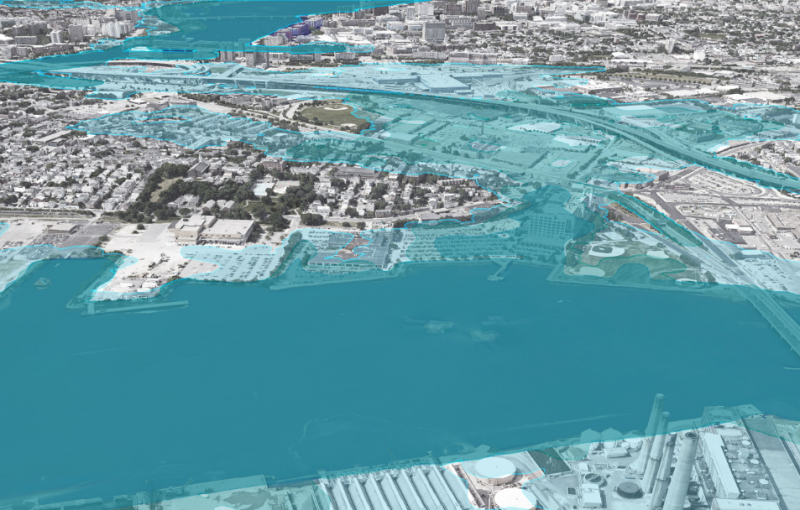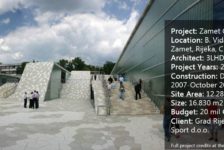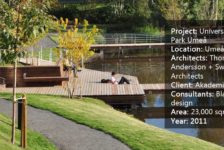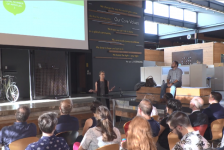As the City of Boston grapples with climate change and sea level rise, teams comprised of Landscape Architects, Urban Planners, and Engineers have been collaborating to truly understand the scale of the impact, and propose innovative solutions that incorporate natural systems.
Recognizing the Challenges of Climate Change
Coastal Resilience Solutions for East Boston and Charlestown, a project led by Kleinfelder Engineering and Stoss, was a direct response to recommendations in the Climate Ready Boston report (2016) that the city ‘prioritize and study the feasibility of district-scale flood protection’ and ‘develop local climate resilience plans in vulnerable areas to support district-scale climate adaptation’. The City of Boston chose to address East Boston and Charlestown first because they are currently at risk from the 1% annual chance coastal flooding and have high concentrations of vulnerable residents and critical infrastructure.

East Boston Flood Mapping
The design team, which included Kleinfelder, Stoss, One Architecture & Urbanism and Woods Hole Group, in coordination with partners at all levels of government, community members and the private sector, developed a resiliency strategy that included a set of evaluation criteria, recommendations for near-term and long-term actions, order-of-magnitude costs and an implementation roadmap to guide the city as it begins to move from planning to physical actions to protect the community.
Incorporating Meaningful Community Engagement
A robust and fun community engagement strategy was central to the development of the project vision and recommendations. Over 400 East Boston and Charlestown residents participated in meetings, open houses and surveys in which they shared their visions and priorities on coastal resilience solutions. Residents placed particular importance on ensuring access to the water and that solutions are effective over the long term.
Using Natural Systems to Improve Resilience
The resiliency strategy and design solution, currently featured as a model in the American Society of Landscape Architect’s Smart Policies for a Changing Climate exhibition, embraces layered flood control and integrated green infrastructure measures that mitigate the effect of climate change, and create social, environmental, and economic benefits and value to the people of East Boston and Charlestown and to all who share in the health of the city and the harbor.

East Boston plan proposes green infrastructure including tiered hardscapes, natural wetlands and living shorelines as well as enhanced harborfront access.
These measures include waterfront open spaces with strategically elevated areas at key points of entry for coastal flooding such as the Greenway in East Boston and at Schrafft’s Center in Charlestown. Additional measures include; enhanced harborwalks with natural wetland buffers that include walkways that get people out and over the water in daily, dry, conditions; ‘living shorelines’ that can provide increased ecological benefits such as habitat; stepped hardscapes that combine social interaction with flood protection, creating places for just sitting and watching the activities; and increased planting of shade trees that help combat higher temperatures. Temporary flood barriers provide immediate protection while these systems are further planned and designed. All of these elements contribute to improved connections to the harborfront making it truly accessible for the broader community. Together, the measures will dramatically increase waterfront open space and public access to one of Boston’s greatest natural resources.

East Boston

Charlestown
The flood protection measures proposed are designed to be effective for 50+ years and would be raised to elevations sufficient to protect against the 1% annual chance flood level with 36 inches of sea level rise and a foot of storm surge, a condition currently estimated to be a potential reality in approximately 2070.
Encouraging Public Investment
Achieving the vision laid out by the project will require both direct public investments and private action guided by regulatory tools such as modified zoning and continued harborfront planning. The implementation plan developed by the project team outlines these actions as well as a number of exciting potential first steps to help catalyze future action. Together the measures outlined will provide flood protection, waterfront access, recreation, mobility and protect over 11,000 residents and at least 300 businesses as well as critical highway and transit infrastructure, healthcare facilities and other important services.
Boston is one of the few cities planning for sea level rise and climate impacts in advance of major storm-related damages. Coastal Resilience Solutions For East Boston and Charlestown was an important first step in this planning, setting the stage and developing a vision for additional future efforts to be undertaken by the city.
—
The Climate Ready East Boston project is one of 20 landscape architecture projects currently featured in the Smart Policies for a Changing Climate Exhibition sponsored by the American Society for Landscape Architects (ASLA). These projects highlight the ways in which landscape architects are building and enhancing communities that work in tandem with natural systems and considers the needs of all. To see the full exhibition, or submit a project worthy of recognition, visit the exhibition website at climate.asla.org.












J. Robert (Bob) Wainner
Well written article….interesting!
But, in doing a little “research”, I learned that 80% of the World’s population lives near “coastal areas”. And, the number of people moving to coastal cities is increasing (not decreasing).
Does anyone else see this as “part of the problem here”?
Of course, living along the California coastline, along the thousands of miles of Florida’s coastline, etc., etc. is very desirable for so many people. This holds true for cities around the World. But, IF these predictions of city flooding are to believed….why are people continuing to live so close to the coastlines….and why are many more thousands of people relocated to the coastal cities?
Sure, maybe the Earth is Warming…..NOW. But, who is to say it won’t COOL after say, 100 to 300 years? How do we know? Everyone seems to be “assuming” that this Global Warming trend will just continue and never stop.
If you GOOGLE “Patrick Moore, PhD”, he earned his PhD in Environmental Science in 1971…he is a brilliant expert on the Earth’s Climate. His philosophy is that a warmer Earth is better for mankind, animals and plant life than a COOL Planet. Plant life needs CO2 to thrive…as well as warmth. Mankind and animals fair better in warmer climates.
The Earth warms and cools in “cycles”….it has never stayed the same for many thousands of years.
Doing research about Scientists around the World…..most people don’t understand that, for many of these scientists to get “funding” for their environment research….they MUST agree to the theory that YES, Global Warming is real. If they disagree, their funding is cut off. Even with NASA (who determined a few years ago, there is no life on Mars)…NASA continues to state, well “maybe” there really IS life on Mars. NASA keeps stating this…..so, they can continue to receive “funding” for their Mars projects.
I believe it’s true now, that the United States is one of the TOP Leaders on the Planet in cleaning up our air and water. WHO is going to force nations like China, India, Korea and hundreds of other Nations to clean up their air and water? Answer: nobody. If indeed Global Warming is REAL…..we have to all agree that it’s a “Global” problem, not just an “American” problem. So, even if the U.S. has the cleanest air and water on our Planet……we will continue to have a problem, as ALL of those other Nations’ air pollution, excessive CO2, water pollution could easily have a negative effect on the United States.
And, people keep talking about “Climate Change”….as being such a threat to our Planet. I just wish to know WHO and HOW anyone believes they can alter our Planet’s Climate.
Even if we (in America) were to put in place “The New Green Deal” at a price tag of something like $90 Trillion…..over 100 years, the positive effects of that program would help by maybe 1%. President Trump’s administration is making an effort to “balance” improving our environmental problems with America’s economy. We can’t bankrupt every American citizen and corporation….just to gain maybe 1% cleaner air and water….let’s be sensible.
I looked at the various City Maps….showing the FLOODING that “could” take place within 5 to 25 years…..to me, it looks exaggerated and a scare tactic on the part of Environmentalist to support their agenda.
J. Robert (Bob) Wainner